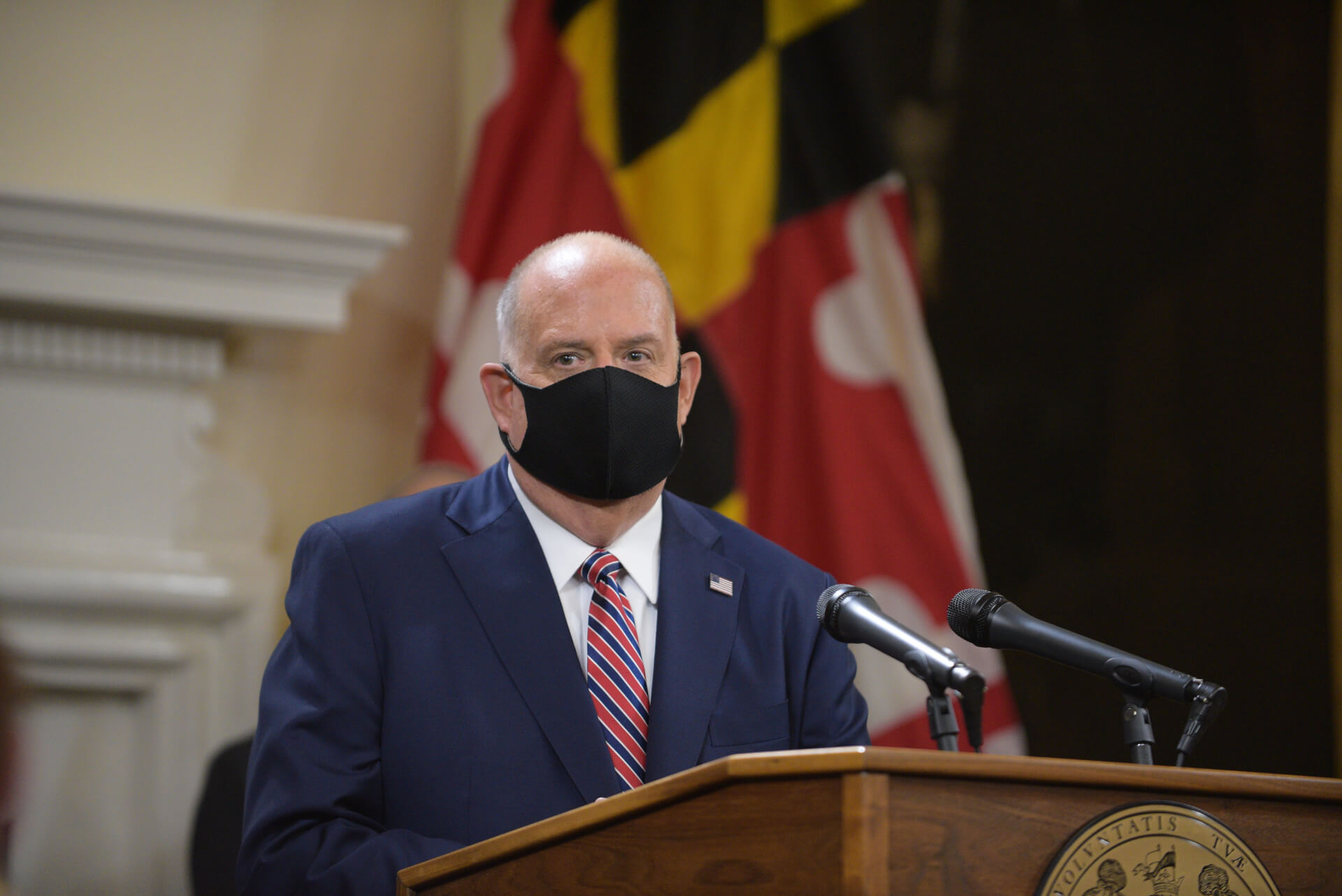COVID-19 Vaccine Could Be Available to Health Care Workers Next Week

First iterations of the COVID-19 vaccine could be available in Maryland as soon as next week, Maryland Deputy Health Secretary Dr. Jinlene Chan announced Tuesday.
Gov. Lawrence J. Hogan Jr (R) anticipates the state will receive approximately 300,000 doses by the end of 2020.
“This is, by far, the most massive undertaking of this pandemic,” he said.
Pfizer and Moderna have both applied for emergency authorization from the federal government. Should they be approved, the Pfizer vaccine could begin being deployed on Dec. 14. If Moderna gets the green light, its vaccine could be available by Dec. 22.
The Food and Drug Administration will consider Pfizer’s approval based on an independent analysis this week. Moderna will be considered next week.
Once they are approved, Maryland expects to receive more than 50,000 doses of the first round of the COVID-19 vaccine from Pfizer and about 104,000 from Moderna. Both vaccines require two doses. According to Hogan, the federal government will provide the second round after the first is distributed.
In accordance with guidelines provided by the Centers for Disease Control and Prevention, vaccines will first be distributed among the state’s 800,000 hospital-based healthcare workers, first-responders and long-term care facility staff and residents.
As more doses become available, people with chronic health conditions and other essential workers in critical infrastructural settings, such as teachers and transit workers, will be eligible to be inoculated. These distribution categories will continue to broaden as more batches are produced and other companies are approved to deploy their product.
“Ultimately our goal in Maryland is to make sure that [a] COVID-19 vaccine is available for every Marylander who wishes to have it,” Chan said.
Because the vaccines are so new, health officials are unsure if those who opt to receive the vaccine will need to renew their dosage each year. They also will not be immediately available to children.
Healthcare providers will receive doses from the federal government by ordering through ImmuNet software which keeps track of vaccination records, including which brand of vaccine each person gets. Members of the public who would like a copy of their vaccination record will be able to receive that information at http://www.md.myir.net. — which should be available soon.
‘We will communicate what we know and what we don’t know’
Although a little light is beginning to appear at the end of the tunnel, Hogan said that modeling for this month and next “looks pretty rough.”
“It’s often said that it’s always darkest before dawn, and right now we do remain in a better position than other states,” Hogan said. “However, in spite of all of that success, it is clear that our worst days of the pandemic are still to come in the weeks and months ahead.”
Since March, nearly 220,000 Marylanders have been diagnosed with COVID-19 and 4,755 people have died from the virus. The infection rate and hospital surge continue to worsen daily.
State health officials said they are aware that many residents may be hesitant to receive the vaccines based on rumors or unreliable information passed along on the internet.
“To help demonstrate confidence in the safety of the vaccine, I want to make it clear that Lt. Gov. Rutherford and I will both take the vaccine in public as soon as it becomes available to us, and we will be leading an aggressive statewide public health campaign urging all Marylanders to get vaccinated,” Hogan declared.
Still, some communities have been skeptical of COVID-19 from the jump, leading the Department of Health to find creative ways to spread the word about how people can protect themselves. As such, the agency plans to work closely with community leaders to understand hesitancy at a hyper-local level.
“We will communicate what we know and what we don’t know,” Bryan I. Mroz, Assistant Secretary & Chief Medical Officer, said. “We will share safety information, such as side effects, in a language and style that is easily understandable.”
Chan tried to eliminate hesitancy about receiving the vaccine by offering some data: Pfizer, which has a 94% to 95% efficacy rate, enrolled over 40,000 people in its clinical trial; Moderna enrolled about 30,000, reaching a 94% efficacy rate at preventing infection. Both aggressively worked to ensure that their trials included diversity across ethnicity, race and age.
Vaccine trials are also monitored by independent committees. According to Chan, monitoring committees for both companies have not flagged any major safety concerns to-date and will continue to monitor trial participants.
Still, about 10% to 15% of those enrolled in these three-part clinical trials have displayed side effects in the first few days after being inoculated. Chan said the effects were mild: pain at the injection site, fever, head and muscle aches and some joint pain.
“This shows, actually, that the vaccine is working — that the body’s immune system was responding to the vaccine to be able to produce those protective antibodies that would ultimately protect that individual against getting the disease itself,” she explained.




 Creative Commons Attribution
Creative Commons Attribution